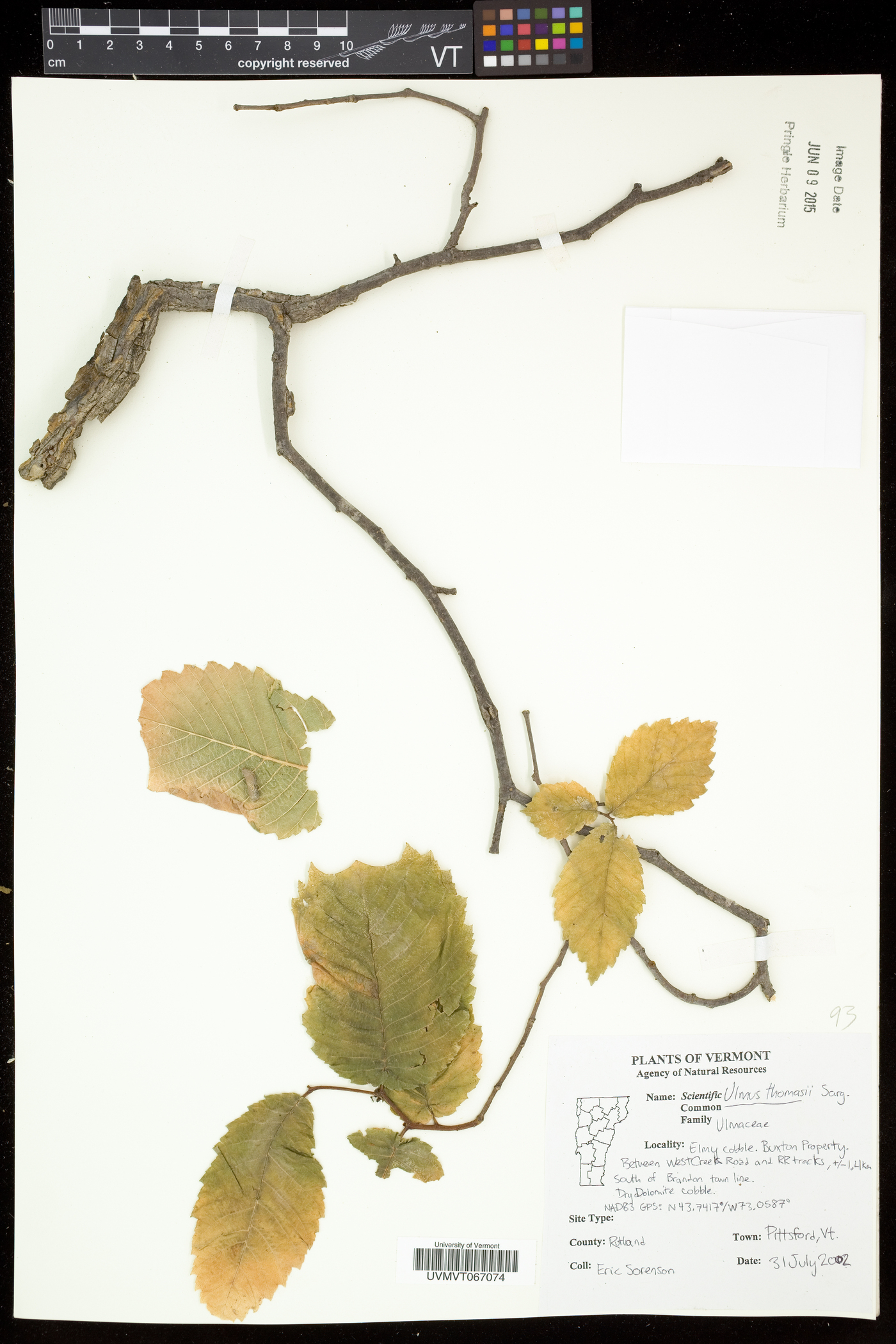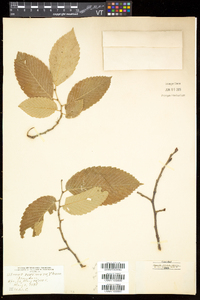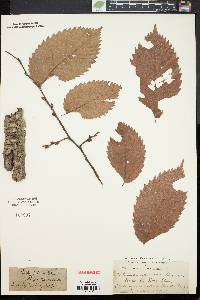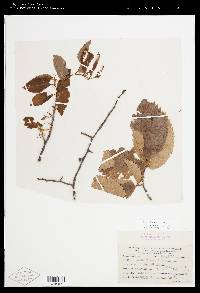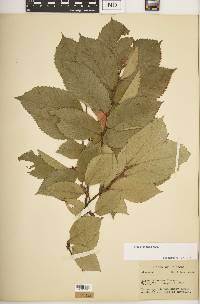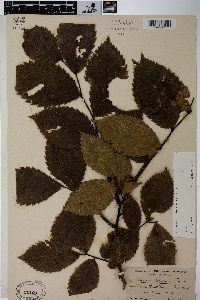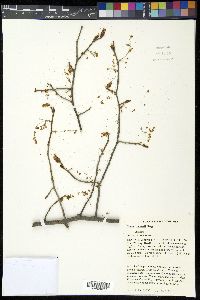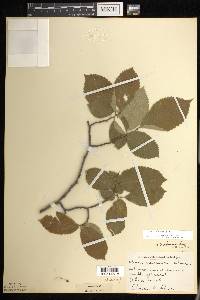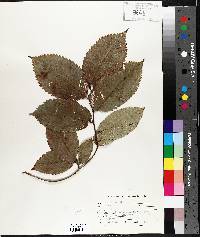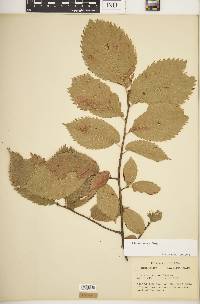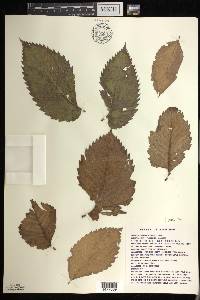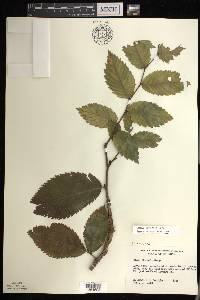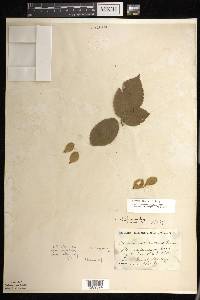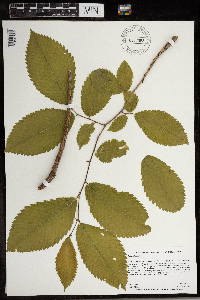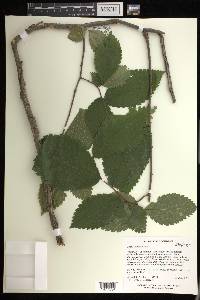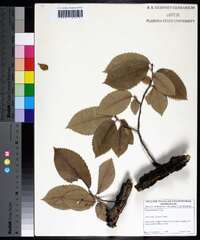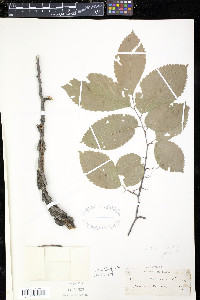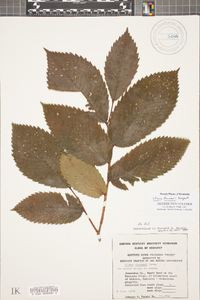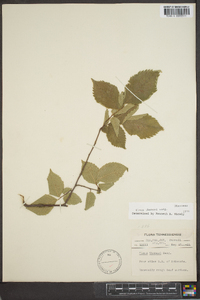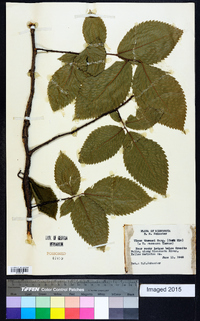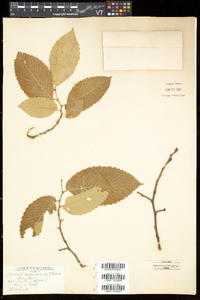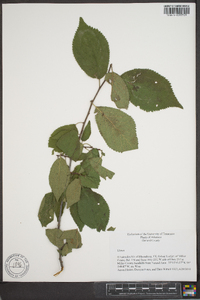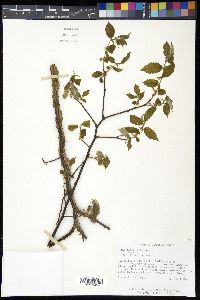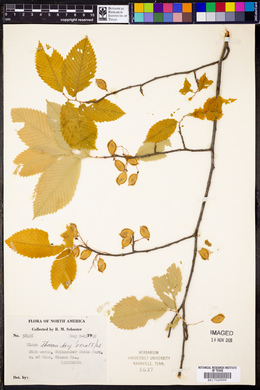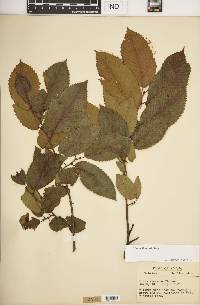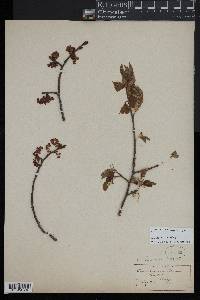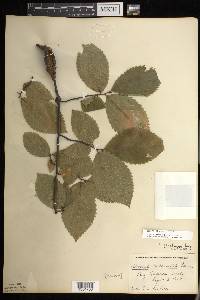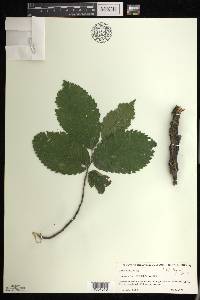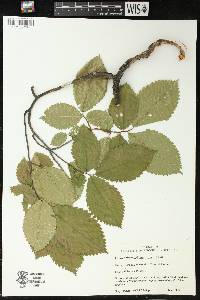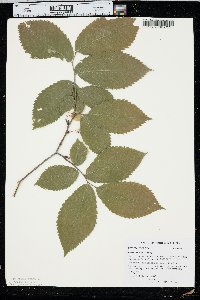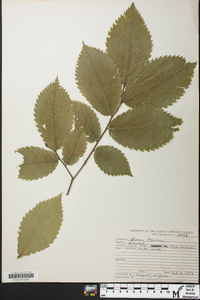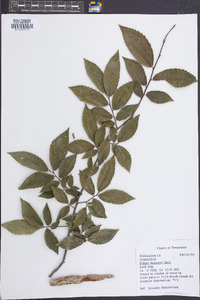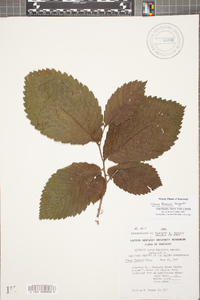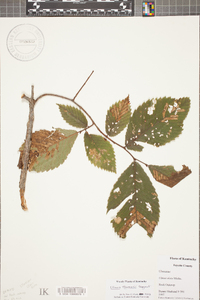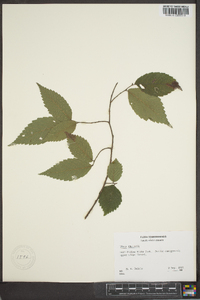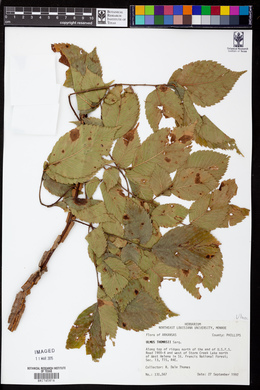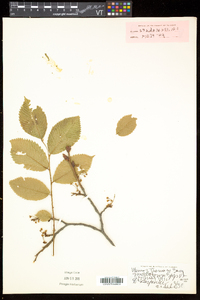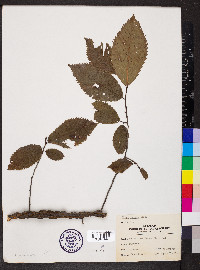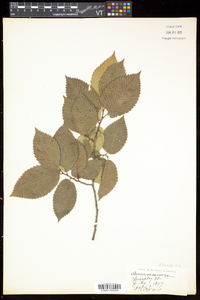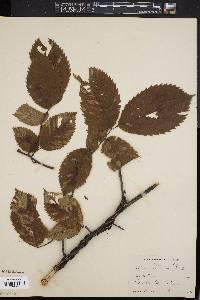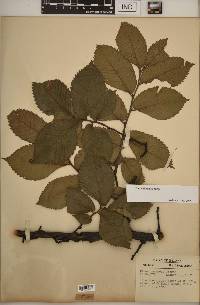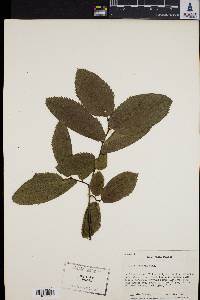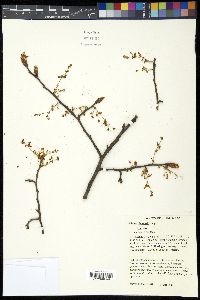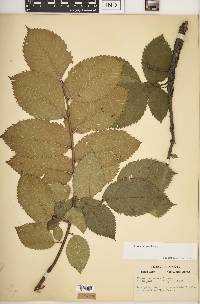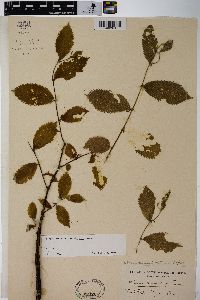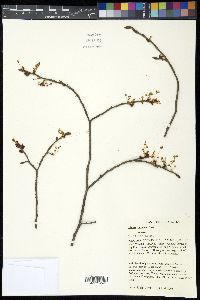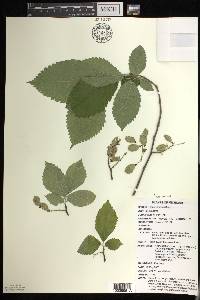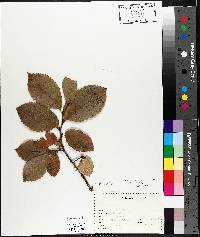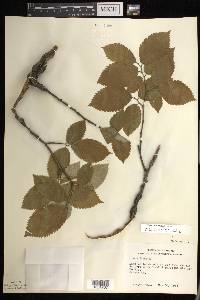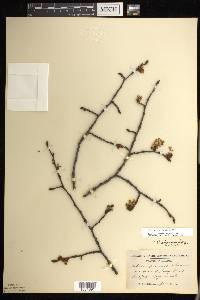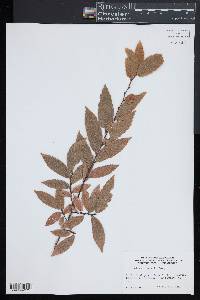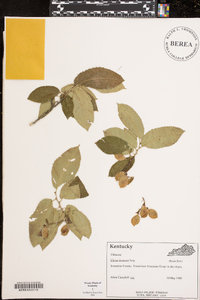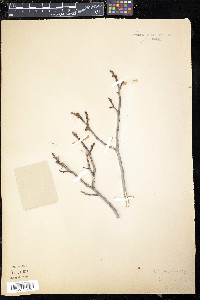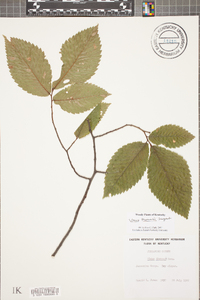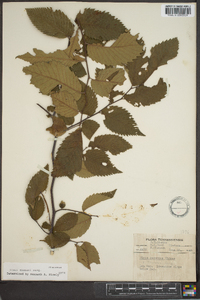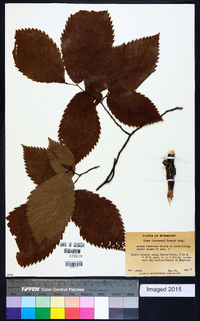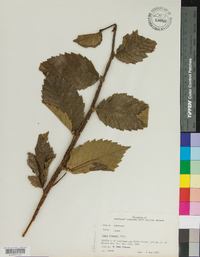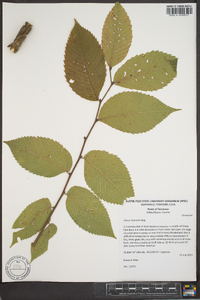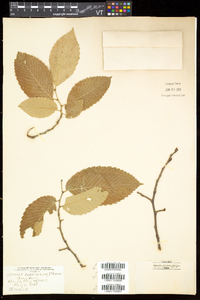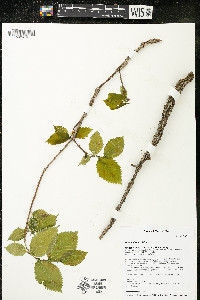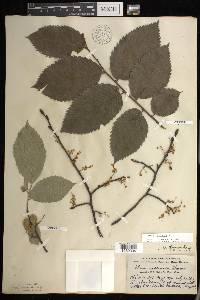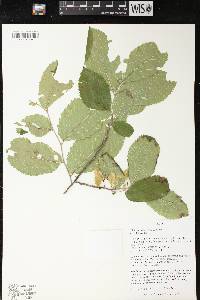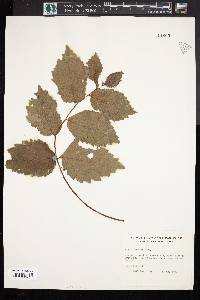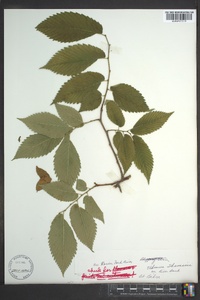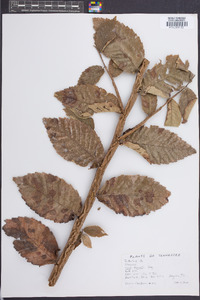Ulmus thomasii
|
|
|
|
Family: Ulmaceae
Rock Elm
|
Trees , to 30 m; crowns oblong. Bark gray, deeply fissured with broad, flattened ridges. Wood hard. Branches short-spreading, young branches pubescent, old-growth with 3-5 prominent, irregular, corky wings; twigs reddish, pubescent. Buds brown, ovoid, acute, pubescent; scales brown, pilose on outer surface, ciliate on margins. Leaves: petiole ca. 5 mm, pubescent. Leaf blade obovate to oblong-oval, (2.5-)9-11(-16) × 2.5-5 cm, base oblique, margins doubly serrate, apex short-acuminate; surfaces abaxially white-pubescent, pubescence not tufted in axils of veins, adaxially dark green, usually glabrous, sometimes scabrous. Inflorescences racemose cymes, long-pendulous, (7-)10(-13)-flowered, to 5 cm; pedicel 0.5-1 cm. Flowers: calyx deeply lobed, divided nearly to middle, lobes 7-8; stamens 5-8; anthers dark purple; stigmas greenish, pubescent. Samaras elliptic to oval, 1.5-2.2 cm, narrowly winged, pubescent, margins short-ciliate, apex shallowly notched. Seeds inflated, not thickened. 2 n = 28. Flowering spring. Rocky slopes, limestone outcrops, rich woods, flood plains, stream banks; 30-900 m; Ont.; Ark., Ill., Ind., Iowa, Kans., Ky., Mich., Minn., Mo., Nebr., N.H., N.J., N.Y., Ohio, S.Dak., Tenn., Vt., W.Va., Wis. Medium-sized tree to 15 - 22 m tall, trunk diameter 30 cm - 0.6 m Leaves: alternate, with short, hairy leafstalks. The blade is green, shiny above, paler and hairy beneath, 7 - 14 cm long, half as wide, and oval to oblong with a rounded, nearly symmetrical base and pointed tip. It is also double-toothed and firm with many closely spaced veins. In autumn the leaves turn yellow. Flowers: in loose, drooping clusters, greenish red, small, bell-shaped. Fruit: single-seeded, winged (samara), 1 - 2 cm long, oval, hairy, with a shallowly notched tip. Seed cavity indistinct. Bark: grayish brown and thick, with wide fissures between broad, flat-topped, interlacing, scaly ridges. There are alternating light and dark colored bands in cross-section. Twigs: slender, brown (becoming grayish brown), sometimes finely hairy, with irregular corky, wing-like ridges. Leaf scars half-round and covered with a corky layer. Bundle scars four to six. Buds: brown, 6 mm long, lance-shaped, pointed, with hairy scale margins. Form: narrow and oblong with drooping branches. Trunk extends unbranched well into the crown. Similar species: The elm Ulmus americana differs by having leaves with an asymmetrical base and samaras with hairy margins. Ulmus procera differs by having shorter leaves (5 - 8 cm), asymmetrical leaf bases, and hairless samaras. Ulmus pumila also has shorter leaves (3 - 7 cm); these are single-toothed. Ulmus rubra differs by having very rough leaves, forked veins near the leaf margins, rusty-colored bud hairs, and brown, hairy seed cavities. The hybrid U. x notha differs by having middle bud scales fringed with white hairs and terminal bud scales fringed with reddish brown hairs. Leaves of the genus Celtis, which are similar in appearance, exhibit three main veins arising from the base of each blade. Flowering: March to May, before the leaves Habitat and ecology: Local in rich calcareous woods, often near streams; associated with hillside seeps. Has also been found in floodplains and fens. Occurence in the Chicago region: native Notes: The wood of Ulmus thomasii is used for boat frames, railroad ties, farm implements, piano frames, hockey sticks, veneer, and crates. This elm, as well as all native elm species, is susceptible to Dutch elm disease and phloem necrosis. See link to Dutch elm disease below. Etymology: Ulmus is the Latin word for elm. Thomasii refers to the botanist David Thomas. Author: The Morton Arboretum Tree to 30 m, the thinly hairy twigs often becoming irregularly winged with 2 or more plates of cork after their second year; buds thinly hairy; lvs oblong to obovate, 8-14 cm, distinctly cordate on one side at base, glabrous above; fls in slender racemes to 4 cm; cal merely lobed; fr elliptic, 1.5-2.3 cm, pubescent on the sides, the stipe 1 mm; 2n=28. Rich upland woods; sw. Que. to Minn., s. to N.J., W.Va., w. Va., Tenn., and n. Ark. (U. racemosa Thomas) Gleason, Henry A. & Cronquist, Arthur J. 1991. Manual of vascular plants of northeastern United States and adjacent Canada. lxxv + 910 pp. ©The New York Botanical Garden. All rights reserved. Used by permission. From Flora of Indiana (1940) by Charles C. Deam Infrequent to frequent or rare within the area shown on the map, to which should be added Floyd, Monroe, and St. Joseph Counties. This species is found in a habitat a little drier than that of the American elm and usually in a more moist habitat than that of the slippery elm. It is almost always associated with the American elm and is difficult to distinguish from it when only the trunk and base are available as characters for separation. The American elm usually has a more buttressed base than the rock elm. …… Indiana Coefficient of Conservatism: C = 10 Wetland Indicator Status: FAC |

